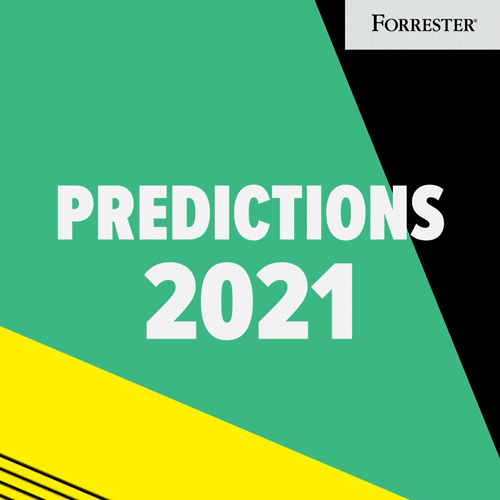Predictions 2021: Edge Computing Hits An Inflection Point
In 2020, the COVID-19 pandemic produced few net-new technology and business developments, but it certainly accelerated many technology trends already in motion. Edge computing is one of the most notable among these accelerated technologies. Every type of technology vendor — hardware, software, and cloud — has jumped on the edge bandwagon, crowding the market and confusing buyers.
The coming year will prove to be the real inflection for edge computing. Practical applications are finally emerging where this architecture can bring real benefits.

Forrester predicts the following key developments in edge computing that will illustrate this inflection point in 2021:
- Data center marketplaces will emerge as a new edge hosting option. When people talk about the location of “the edge,” their descriptions vary widely. Regardless of your own definition, edge computing technology needs to sit as close to “the action” as possible. It may be a factory floor, a hospital room, or a North Sea oil rig. In some cases, it can be in a data center off premises but still as close to the action as makes sense. This rules out many of the big data centers run by cloud providers or co-location services that are close to major population centers. If your enterprise is highly distributed, those centers are too far. We see a promising new option emerging that unites smaller, more local data centers in a cooperative marketplace model. New data center aggregators such as Edgevana and Inflect allow you to think globally and act locally, expanding your geographic technology footprint. They don’t necessarily replace public cloud, content delivery networks, or traditional co-location services — in fact, they will likely enhance these services. These marketplaces are nascent in 2020 but will become a viable model for edge computing in 2021.
- Private 5G will push enterprises to the edge. If any term could challenge edge computing as top buzzword du jour, it’s 5G. The 5G hype machine was in full stride as we entered 2020, and then it fell off the radar a bit as everyone dealt with more pragmatic priorities brought on by the pandemic. The 5G buzz is getting louder again, with trials now underway in key cities and Apple’s iPhone 12 injecting a lot of energy into the dialogue. Despite the hype, 5G technology is superior in many ways to existing networking options. Public 5G from the carriers is indeed coming and will transform how we do many things, but it will take years to reach widespread adoption. Forrester sees immediate value in private 5G — a network dedicated to a specific business or locale like a warehouse, shipyard, or factory. Private 5G is here now, and we expect it to fuel edge computing in 2021. Business infrastructure such as warehouse robots and factory machine tools enabled by the internet of things need local processing and low-latency networks; edge computing and 5G serve these, respectively. 2021 will be the inflection for 5G, but it will be private, not public.
- New edge vendors will shave five points off public cloud growth. Cloud services continue to grow like weeds. The pandemic pushed cloud revenues higher than expected in 2020. That bull run will continue into 2021, but we will see edge computing moderate that meteoric growth a bit. As edge computing becomes a “cool” new platform for business computing, it will siphon some of the money that would otherwise have gone to cloud expansion.
While your benefits will vary, your enterprise will likely take business to the edge in 2021. It is a confusing market, and serious applications are only starting to materialize. We do believe the benefits will be significant if you can attenuate the noise. For more analysis, view our full report on edge predictions here.
